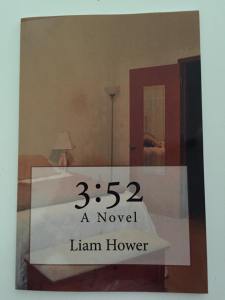 As a K–12 literacy supervisor who also serves as a literacy coach, I work closely with teachers in grades 2–6 who teach from Lucy Calkins’s Units of Study Series. In line with our district’s mission to give learners more voice and choice, teachers frequently incorporate technology into writing workshop, in order to differentiate approaches to writing, to add depth to informational and argumentative writing, and to support conferring with writers. As an administrator, I have found this to be a huge benefit to both our writing instruction and achieving the district mission.
As a K–12 literacy supervisor who also serves as a literacy coach, I work closely with teachers in grades 2–6 who teach from Lucy Calkins’s Units of Study Series. In line with our district’s mission to give learners more voice and choice, teachers frequently incorporate technology into writing workshop, in order to differentiate approaches to writing, to add depth to informational and argumentative writing, and to support conferring with writers. As an administrator, I have found this to be a huge benefit to both our writing instruction and achieving the district mission.
Across district classrooms, writers enjoy choice, facilitated through technology. Helping to overcome some writers’ reluctance to physically write and rewrite, word processing has given writers the opportunity to efficiently make changes to their pieces and improve how our youngest writers approach the revision process. In the words of one second grader, “I like when I don’t have to erase. I can just backspace.” A fifth grader said, “It makes [writing] more efficient. Even if I don’t have the best handwriting, people can understand my writing when I type.”
Technology also enables writers to engage in learning about new topics through safe digital resources. Writers in grades K–3 access PebbleGo and, through their school libraries, conduct research for their writing. They also use Wonderopolis to explore topics and then write about their wonders.
At the primary level, writers have researched a range of topics, written scripts, and then published their work through ChatterPix, an iPad app that allows learners to record themselves reading their writing while making their artwork come to life. Here’s a great example of how a kindergarten class used ChatterPix to publish their research about sharks. In a similar way, fifth graders across our district used Blabberize to present their informational writing about explorers. Writers across the grade levels appreciate opportunities to use technology to present their writing in different formats. Administrators are grateful that students are learning about the research and writing process in an engaging manner.
Sixth-grade teachers in my district ask students to incorporate digital tools into their writing to publish more interactively using Discovery Education’s BoardBuilder. The results are two-fold: this technology allows writers to create pieces that look like the writing they see on the Internet (e.g., the real-world writing that Kelly Gallagher recommends in his book, Write Like This), and encourages writers to analyze photographs and videos to determine which elements best support their writing purposes.
Integrating technology also allows writers to see writing as a creative process. For their narrative writing projects, secondary writers participate in the National Novel Writing Month. Last year, writers in sixth grade published their books independently, and each writer took a published version of his or her novel home. Students were thrilled at having become published authors.
Where I have seen technology support writing workshop the most is with the use of Google Docs. In as early as third grade, when writers draft in Google Docs, teachers can provide feedback electronically and more quickly. I have observed teachers with iPad in hand, roaming the room, reading writing students shared with them, and then sitting down at a writer’s conference to discuss what they read or what the writer flagged as a trouble spot. The ongoing digital feedback allows teachers to comment alongside writers' flash drafts.
Finally, these digital conferences can occur between peers. Conferring is a powerful means for supporting writers’ growth, and technology provides teachers and students more accessibility and formative feedback. One seventh grader shared that he likes highlighting part of the text and using the comment feature in Google Docs to pose a question for his writing partner to consider. He also reported that comments from his classmates about his own writing have helped him make useful revisions.
Writers who use digital tools to actively engage with the research and creation process value opportunities to enhance their messages with multimodal elements. They also appreciate extending their writing time and their opportunities to confer with and receive feedback from peers and teachers outside of actual writing workshop time. Overall, I have seen technology enhance the outstanding teaching and writing that is taking place within the writing workshop model.
 Aileen P. Hower is the K–12 Literacy/ESL Supervisor for South Western School District. She also coordinates the Eduspire and Penn State York Summer Literacy Institutes and teaches graduate level reading courses for Cabrini University and Eduspire. In addition to teaching, she is the vice president for the Keystone State Reading Association and conference chair for the KSRA 50th Annual Conference in 2017. You can find her on Twitter or on her blog.
Aileen P. Hower is the K–12 Literacy/ESL Supervisor for South Western School District. She also coordinates the Eduspire and Penn State York Summer Literacy Institutes and teaches graduate level reading courses for Cabrini University and Eduspire. In addition to teaching, she is the vice president for the Keystone State Reading Association and conference chair for the KSRA 50th Annual Conference in 2017. You can find her on Twitter or on her blog.